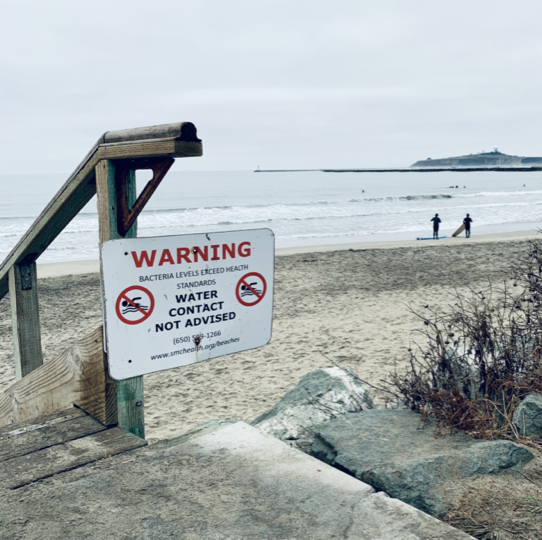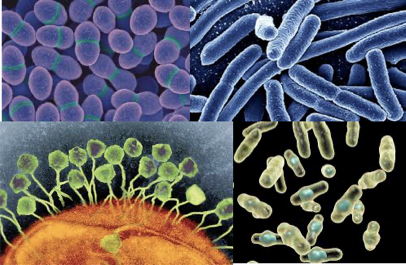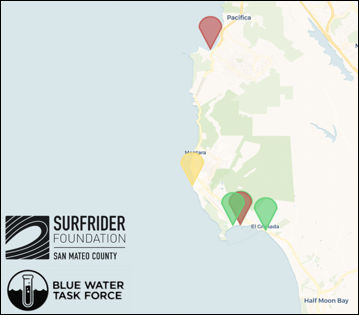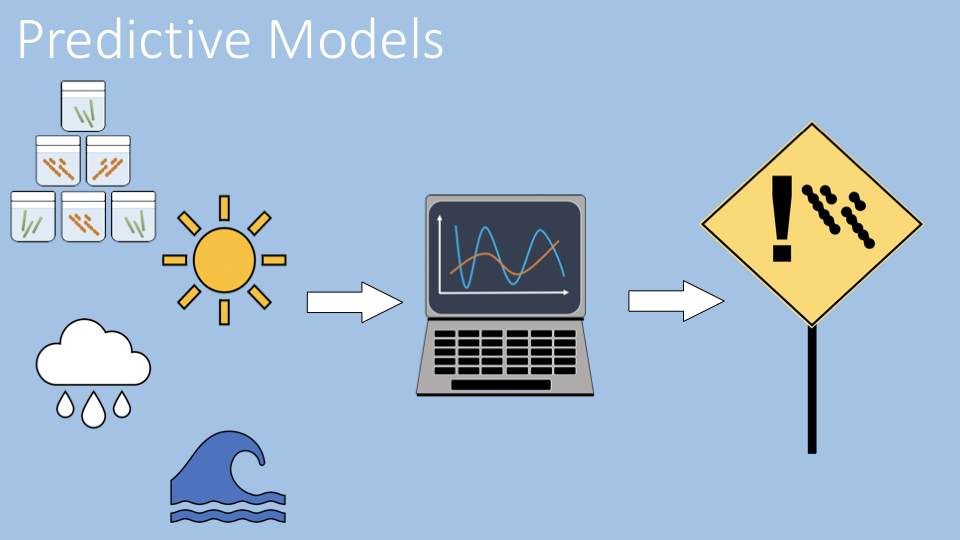
by Ryan Searcy
(Executive Committee)
March 22, 2021
How do we currently monitor beach water quality?
In the US, an estimated $90 million and 2.2-3.7 billion illnesses per year are associated with poor beach water quality. At many locations, routine water quality monitoring is conducted to provide an indication of health risk. While there are many types of water quality parameters – temperature, salinity, nutrient levels, heavy metals, contaminants of emerging concerns -- the quality of water used for recreational purposes is most commonly assessed by monitoring for fecal indicator bacteria (FIB).
High concentrations of FIB in water are linked with the presence of pathogens and higher risk of acute health effects such as stomach flu, skin rash, and eye and ear infections.There are many types of FIB, Enterococcus, Escherichia coliforms (E. coli), and Clostridium perfringens being some of the most common. FIB are not necessarily pathogenic themselves, yet used as surrogates of pathogens because they are easier and cheaper to measure.
Beach management decisions are made by local health agencies based on FIB concentrations measured in water samples. If FIB in routinely collected samples are measured in concentrations higher than the allowed threshold, beaches are required to be posted as unfit for swimming and possibly closed. There are additional programs such as Surfrider’s Blue Water Task Force (BWTF) program, that conduct additional sampling to what is routinely performed by agencies. Beachgoers can find more water quality information by finding their local testing agency or by visiting bwtf.surfrider.org
What are the issues with traditional water quality monitoring?
In short, beachgoers never really have up-to-date water quality information to weigh risk. It has been shown that FIB can change in environmental waters at high frequencies (on the order of minutes to hours). However, our capacity to monitor FIB is much lower. In California, where one of the world’s most extensive water quality monitoring networks exists, most sites are tested but once weekly (twice if a BTWF conducts additional sampling). Additionally, lab methods required to enumerate FIB add another 1-2 days before sample results are available to beachgoers. In this time, FIB in the surf zone could grow, decay, or be transported such that a days-old sample is not representative of current water quality. By using single, days-old samples alone, a beach can be posted when FIB are actually in low concentration, or (worse) unposted when FIB are in high concentrations.
What is predictive modeling, and how can it alleviate these issues?
Fortunately, predictive models are one solution to this public notification issue. Data-driven methods have been successfully used to develop models that can accurately predict FIB standard exceedances. Such models use data representing important environmental conditions to predict FIB levels. Environmental data typically used include precipitation, wave heights and period, tide levels, meteorological conditions, and streamflow. Models are typically statistical or machine learning-based, are beach-specific, and are calibrated on years of historical FIB and environmental data. After a model has been developed, new predictions are made by inputting up to date environmental data whenever so desired. Beachgoers can then access predictions on websites or mobile apps. What all this amounts to is beachgoers getting daily or more frequent water quality predictions -- a huge upgrade over using single samples alone!
Where is predictive modeling currently being used?
There have been dozens of studies investigating the use of models to predict beach water quality, and the findings of most are clear: Not only can models provide more frequent water quality information, but they are often more accurate in predicting water quality than using single samples alone. As such, the use of models in routine monitoring and public notification programs is endorsed by the EU, the WHO, and the US EPA. Models have been implemented in operational programs around the world in locations such as Ireland, Hong Kong, New Zealand, the US Great Lakes, and California.
How can Surfrider use predictive modeling?
Because BWTF programs have been monitoring their local beaches for years, historical FIB datasets exist that would already allow for predictive modeling. With some volunteer effort, predictions can be made to supplement the BWTF samples and provide Surfrider and its following more frequent water quality information. If implemented, it would be the first community science-based endeavour of predictive modeling.
CALL TO ACTION
We’re looking for someone with data science or software engineering experience to help us at the San Mateo County Surfrider Chapter build out a predictive modeling system.
Contact / Links
JEMA Paper
ES&T Paper
GitHub Repository
Images

Credit: Ryan Searcy

Fecal indicator bacteria (FIB); Credit: Google

Map of current BWTF sites

